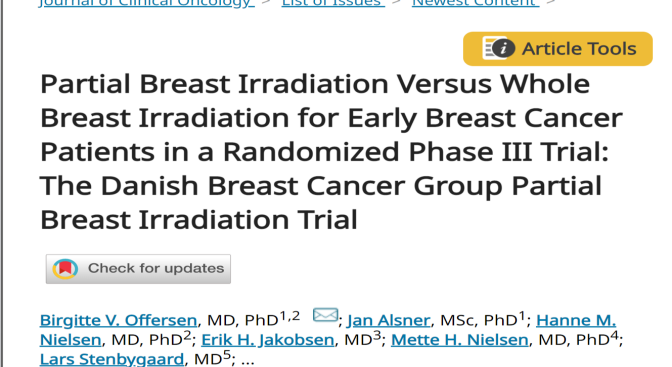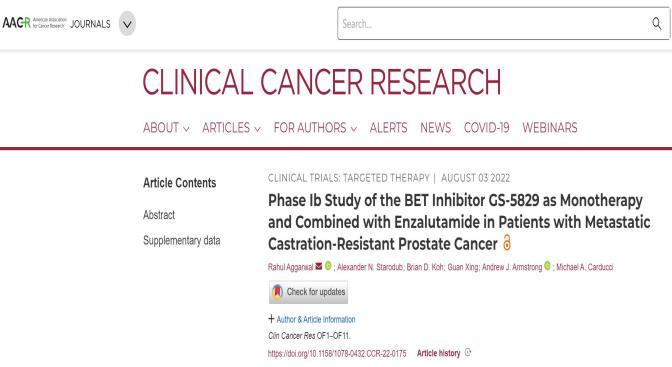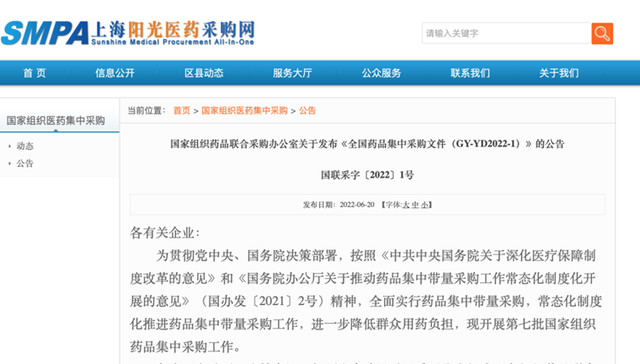JCO: How to choose postproof radiotherapy plan for early breast cancer patients?Comparison of efficacy, side reaction comparison
Author:Cancer Channel of the Medical Time:2022.08.09
*For medical professionals for reading reference

1 minute every day, give you the professional "talk" in the tumor circle! (If the original text is required, you can add Xiaobian WeChat yxj_oncology)
Summary:
1.J Clin Oncol: Comparison of local radiotherapy and total breast radiotherapy after breast protection in early breast cancer patients
2. Clin CANCER Res: BET inhibitor combined with Enioluramine therapy to metastasis and cure the treatment of prostate cancer stage research
1
J clin oncol: The comparison of local radiotherapy and total breast radiotherapy after breast protection in early breast cancer patients
▎ Clinical issue:
Are patients with local breast irradiation therapy (PBI) safe for patients with early breast cancer (BC) with low recurrence risk?
The local recurrence risk of elderly breast cancer patients after combined with full milk camera treatment (WBI) is low, but the incidence of adverse reactions such as hard changes in breasts is higher. Will PBI also have similar risk incidence?
A non -inferior -effective random control clinical study published in the J Clin Oncol from the Danish BC collaboration group reveals the impact of WBI and some PBI on the incidence of breasts. For low -risk BC patients, in vitro PBI compared to WBI, the incidence of breast harderation is low and the recurrence rate is similar.

▎ Research plan:
The study was included in a total of 865 patients (434 WBI and 431 PBI groups) from 2009 to 2016. The patient was randomly assigned to the WBI and PBI group, and the radiation doses were 40GY. The main endpoint of the study is 2-3 breasts in 3 years.
▎ Main discovery:
(1) Compared with PBI, the breast hardened rates within 3 years are 9.7%and 5.1%(P = 0.014), respectively. Studies have found that the big breasts are significantly related to the hard changes of the breast. The breast harderation rate of the breasts of large breasts within 3 years is 13%(WBI) and 6%(PBI), while the breast harderation rate of small breasts is only 6%(WBI) within 3 years (WBI) And 5%(PBI).
(2) Patients in PBI groups have not seen abnormal pigmentation, capillaries, dilatation, edema or pain, and patients' satisfaction.
(3) The risk of increasing the risk of radiotherapy -related complications in Totazole and smoking.
(4) Local recurrence of 16 patients (6 WBI and 10 PBI groups, P = 0.28), 20 patients with opposite BC transfer, 8 patients with distant metastasis (5 WBI and 3 PBI groups) Essence 73 patients (8.4%) detected the second cancer of non -BC, and the incidence of two groups was similar.
▎ Looking out:
For low -risk BC patients, in vitro PBI compared to WBI, the incidence of breast harderation is low and the recurrence rate is similar. Big breasts are risk factor for rigidity of radiotherapy -related breasts. The study prompts that medium -sized outer beam PBIs can be recommended as standard assistive treatment for early BC patients.
references:
[1] https://ascopubs.org/doi/full/10.1200/jco.22.00451
2
Clin CANCER Res: BET inhibitors combined with Enioluramine therapy to metastasis and cure the treatment of prostate cancer stage research
▎ Clinical issue:
GS-5829 is a oral bromine domain and end-end inhibitor. Its efficacy and safety of the treatment of metastatic dehuminating prostate cancer (MCRPC) are unclear.
A clinical trial from CLIN CANCER Res shows that GS-5829 has general tolerance, but the effect is limited, and the blood concentration does not increase linearly linearly.

▎ Research plan:
(1) Incident in standards: Men who confirm MCRPC and receive disease progress after receiving acoulons and/or Eniharamine;
(2) Patients accept 3+3 doses to increase the administration mode. The starting dose is to give 2 mg GS-5829 individually per day or give 160mg Enzalu amine at the same time per day;
(3) The main efficacy ending is the 24 weeks of no progress; the secondary end point includes the decrease in prostate special antigen compared with the baseline, no progressive survival (PFS) and GS-5829 pharmacokinetics (PK);
(4) Research 1599 also evaluated PK and security.
▎ Main discovery:
(1) 94%of patients report the treatment-TEAE (Teae); 16%of patients stop the medicine due to TeaE;
(2) After giving 2mg to 9mg GS-5829 once a day, AUCTAU or CMAX has not seen dose-dependence increase;
(3) CCR2 suppression and HexIM1 induction of biomarkers rose only in higher doses of single -drug treatment;
(4) In all doses, PK and efficacy parameters have high variability between patients;
(5) It is estimated that through the Kaplan-Meier model, all patients who have been treated are 25%(95%CI, 10%-42%) for 24 weeks.
▎ Looking out:
The results of this study show that the efficacy of GS-5829 is low, and the concentration of blood is related to non-linear doses of dosage doses, and clinical value is limited. It is not advisable to continue developing the treatment drugs for MCRPC.
references:
[1] https://aacrjournals.org/Clincancerres/article/doi/10.1158/1078-0432.CR-22-0175/707423/Phase-IB-Study- Bet-inhibitor-5829-ASThe top issue of the clinical literature is on the line.
1. Scan the QR code below
- END -
Xi'an 4 adjustments to the mid -to -high risk zone, Gansu Provincial Center for Disease Control and Prevention issued important reminders

Epidemic Speed ReportOn July 2, 2022, a nucleic acid screening of the key popu...
The seventh batch of national drug collection is intended to open the bid in early July!Multi -treatment fields such as malignant tumors, cardiovascular, diabetes and other treatment

A few days ago, the National Organic Pharmaceutical Cooperative Purchasing Office ...